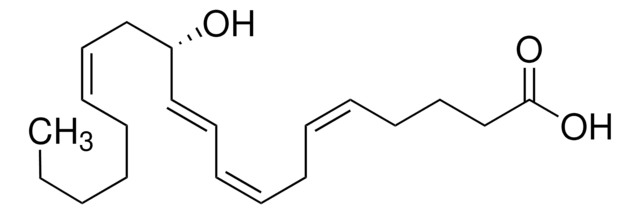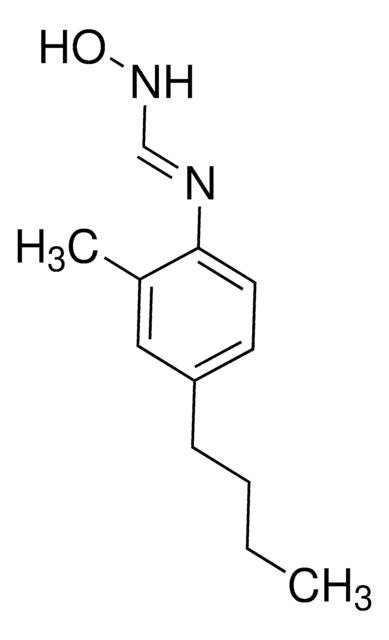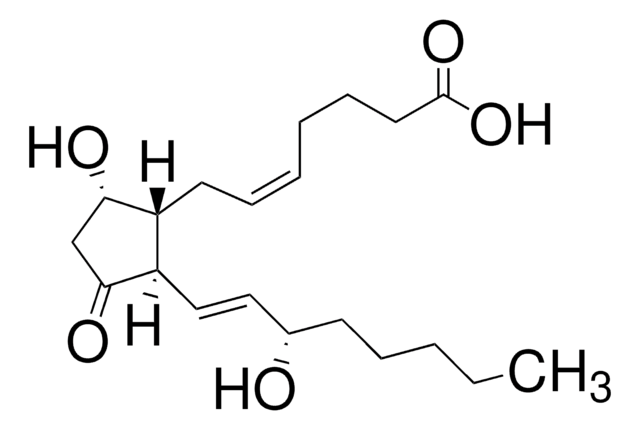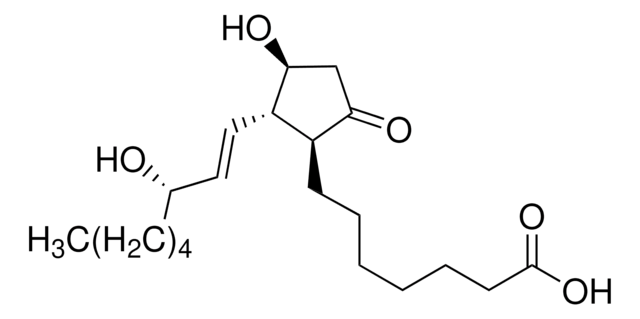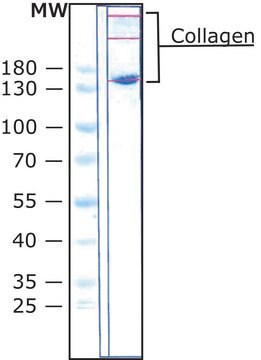H3023
20-Hydroxy-(5Z,8Z,11Z,14Z)-eicosatetraenoic acid
≥90% (HPLC), liquid, Ras/MAP pathway activitor
Synonym(e):
20-HETE, 20-Hydroxyarachidonic acid
About This Item
Empfohlene Produkte
product name
20-Hydroxy-(5Z,8Z,11Z,14Z)-eicosatetraenoic acid, ~100 μg/mL in ethanol, ≥90% (HPLC)
Assay
≥90% (HPLC)
Form
liquid
Konzentration
~100 μg/mL in ethanol
Versandbedingung
dry ice
Lagertemp.
−20°C
SMILES String
OCCCCC\C=C/C\C=C/C\C=C/C\C=C/CCCC(O)=O
InChI
1S/C20H32O3/c21-19-17-15-13-11-9-7-5-3-1-2-4-6-8-10-12-14-16-18-20(22)23/h1,3-4,6-7,9-10,12,21H,2,5,8,11,13-19H2,(H,22,23)/b3-1-,6-4-,9-7-,12-10-
InChIKey
NNDIXBJHNLFJJP-DTLRTWKJSA-N
Biochem./physiol. Wirkung
Verpackung
Signalwort
Danger
H-Sätze
Gefahreneinstufungen
Eye Irrit. 2 - Flam. Liq. 2
Lagerklassenschlüssel
3 - Flammable liquids
WGK
WGK 1
Flammpunkt (°F)
57.2 °F - closed cup
Flammpunkt (°C)
14.0 °C - closed cup
Persönliche Schutzausrüstung
Eyeshields, Gloves, type N95 (US)
Analysenzertifikate (COA)
Suchen Sie nach Analysenzertifikate (COA), indem Sie die Lot-/Chargennummer des Produkts eingeben. Lot- und Chargennummern sind auf dem Produktetikett hinter den Wörtern ‘Lot’ oder ‘Batch’ (Lot oder Charge) zu finden.
Besitzen Sie dieses Produkt bereits?
In der Dokumentenbibliothek finden Sie die Dokumentation zu den Produkten, die Sie kürzlich erworben haben.
Kunden haben sich ebenfalls angesehen
Unser Team von Wissenschaftlern verfügt über Erfahrung in allen Forschungsbereichen einschließlich Life Science, Materialwissenschaften, chemischer Synthese, Chromatographie, Analytik und vielen mehr..
Setzen Sie sich mit dem technischen Dienst in Verbindung.


